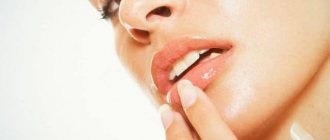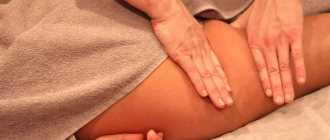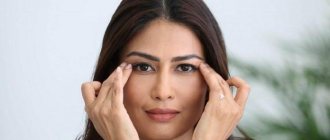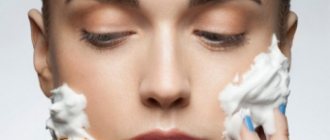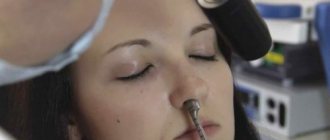Hello, dear readers! Continuing the topic of massage and its effect on the body, today we will go through the main points - organs and systems for which massage is especially useful. Let's tell you a secret, the effect of massage on the human body is positive and beneficial in every sense. Perhaps there is no part of the body or organ that would not be affected by the beneficial effect of massage.
So, what effect does it have on our body?
You and I know that there are many ways to influence the human body through massage. This is a general, therapeutic, anti-cellulite, head, back and collar area, cupping, honey... Today we are talking about a general massage, which the master does for 1.5-2 hours, alternately working all areas of the body - back, arms, legs, shoulder belt, head.
Since the contact of the master’s hands with our body occurs through the skin, it first of all experiences a beneficial effect.
How to do self-massage correctly
You can relax and get rid of unpleasant feelings alone. To do this you will need a special ball and a wall.
- Place the ball between your back and the wall and press it.
- Make several circular movements with your shoulder, knead the soft tissues, do not press hard.
Using the same principle, you can perform the exercise on the floor.
The middle part of the back can be worked against the wall. Stand with your back to the wall, place the ball on the area between your lower back and shoulder blades, begin to bend your knees and lower yourself down. The ball will move from the lower back up to the shoulder blades.
You can also do self-massage of the face, neck, abdomen and arms. Let's look at each type in more detail.
Face and neck
With clean hands, gently knead your skin along the massage lines as shown in the image.
Stomach
Warm up the skin with stroking movements. Next, grab the skin so that the fat layer is between your thumb and index finger, lightly press the fold with your fingers and gradually move clockwise over the entire surface of the abdomen, paying special attention to problem areas.
After three rounds of this massage, rub your skin with a towel. The duration of the procedure is no more than 15 minutes.
Fingers and hands
Tap the fingertips of both hands vigorously against each other. Squeeze your thumb with the fingers of your other hand and make circular movements, as if removing invisible clothing from your finger.
You can stretch your palm like this: take one hand with the other hand, place your thumb in your palm and make rotational movements for 1-2 minutes, then change hands.
For weight loss
They begin to work on any part of the body with stroking. With the help of squeezes, you work on the deep layers of the skin. Rub your skin with light movements to increase blood circulation. Next, move on to tapping and patting, this is more suitable for large muscles.
For the best effect, arm yourself with auxiliary means - a brush for dry massage, vacuum cans, special rollers for combating cellulite. Just read the contraindications before use.
The effect of massage on the skin
The skin, as the largest organ of our body, receives a lot of benefits from sessions. The intense impact of the massage therapist’s hands gives the following results for the skin:
- tones, increasing turgor (elasticity);
- stimulates blood circulation in blood vessels;
- improves skin color;
- removes sagging;
- fights cellulite.
You've probably noticed how the skin looks after a session - tightened and elastic, even in problem areas for women. This beneficial effect is achieved by stimulating the blood supply through direct mechanical action - pressure, friction, stroking the specialist’s hands. And where there is good blood supply, there is an improvement in metabolic processes, the removal of waste and toxins. And what can we say about the special anti-cellulite therapy technique? With its help, you can make your skin smooth and even, getting rid of the orange peel.
The effect of massage on the circulatory and lymphatic system.
Massage causes expansion of functioning capillaries, opening of reserve capillaries, which creates more abundant irrigation of blood not only to the massaged area, but also reflexively to internal organs, resulting in increased gas exchange between blood and tissue (oxygen therapy). At rest, there are 31 capillaries working in 1mm2 of muscle cross-section, and after massage their number increases to 1400! The opening of reserve capillaries under the influence of massage helps to improve the redistribution of blood in the body, which facilitates the work of the heart.
Massage has a great effect on lymph circulation. Lymph flow occurs very slowly - 4-5 mm per second, but the flow speed is very variable and depends on various factors. Under the influence of massage movements - stroking in a centripetal direction - the skin's lymphatic vessels are easily emptied and the lymph flow accelerates. In addition to the direct effect on local lymph flow, massage has a reflex effect on the entire lymphatic system, improving the tonic and vasomotor functions of the lymphatic vessels.
Effect on the nervous system
Massage has a very beneficial effect on the nervous system. Regular sessions, especially on the back, head and feet, have been proven to help reduce stress and nervous tension. This is why massage is so useful for those who have a busy and busy work schedule. Two or three sessions a week after work will increase your performance, because... This type of physical therapy relieves muscle tension. And, thanks to neural connections in the cerebral cortex, a chain reaction occurs - the release of nervous and mental tension.
Positive effects of massage
However, the fact that massage does not help burn fat does not mean that it does not have positive properties.
Another detailed answer was given by the medical consultant of the Health and Sports studio, neurologist-therapist, massage therapist Alexander Galagan.
He recalled the different physiological effects of massage:
- Mechanical removal of keratinized particles of the surface layer of the skin;
- Normalization of the sebaceous glands;
- Increased local blood flow;
- Strengthening local lymph flow;
- Triggering a response from the nervous system;
- Release/production of humoral substances (hormones and hormone-like compounds);
Once the physiological effects of massage are understood, it becomes easier to understand why massage is beneficial.
Mechanical cleansing of the skin from dead particles allows the skin to look fresh, literally younger. Along with the improvement in the functioning of the sebaceous glands, it becomes possible to remove (if any) the excess secretion of these glands, as well as restore the “lipid skin mantle”.
Increased blood flow facilitates the delivery of various essential substances to tissues.
Increasing lymph flow helps reduce the severity of local edema, and also stimulates the removal of toxic substances and metabolites (end products of metabolism) from tissues.
the reflex activity of the nervous system from the point of view of the task that is set before the session. With the help of some techniques you can excite the body immediately before a competition to achieve better results. Other methods help relax muscles, relieve nervous tension and stress. The effects of massage on the nervous system can be different.
Humoral substances, the release of which accompanies a massage session , also help improve capillary microcirculation (histamine), improve the conduction of nerve impulses along nerve fibers (acetylcholine), and also create a feeling of pleasure (endorphin compounds).
Impact on the muscular system
It is much more difficult to work the muscles than the skin and subcutaneous fat, so the master has to apply more intense pressure with his hands. But the result is worth it. It’s not for nothing that they say that massage is a passive load. The direct mechanical effect on the muscles is similar in effect to that if you yourself were making an effort, tensing and relaxing the muscles. You will be surprised, but during a session of intense muscle training, you also lose calories, although you lie quietly and enjoy it.
Effect on joints, ligaments, tendons
Using various techniques, you can improve the condition of joints, ligaments and tendons. During the session, the specialist influences the joints indirectly - through the muscles. But since the joints of the arms and legs are closely connected to the muscles, the flow of blood and oxygen enrichment of the adjacent muscle tissue cannot but have a beneficial effect on the condition of the joints.
With the help of a massage therapist, you can not only strengthen your joints, ligaments and tendons, but also improve your condition after injuries and operations in this area. It is not for nothing that this type of physiotherapy is included in rehabilitation courses as one of the key methods for restoring motor function of the limbs.
Main types of massage
All types of massage are divided into two types: therapeutic and relaxing. Therapeutic massage is prescribed by a doctor, with its help a person copes with certain health problems. A relaxing massage has no special indications; it can be done by almost anyone, even at home by a non-professional.
Massage is divided into:
- Classic (Swedish). The most common type of massage that is suitable for people of any age. This type has almost no contraindications; it helps improve health and relieve a person from various types of ailments. In this case, you don’t need to specifically study to become a massage therapist; it’s enough to master the basic skills and apply them to your family or friends.
- Hardware. The massage is performed with a special vibration device. It is usually prescribed for diseases of the respiratory system.
- Medicinal. Otherwise, it can be called “medical”. Helps with diseases of the spine, it is carried out in a course, the duration of which is determined individually by the doctor and depending on the severity of the disease.
- Sports. Develops muscles before performing physical exercises, relaxes them after sports. Sports massage also protects the athlete from injuries during training or competitions, warms him up, and keeps the body in good shape.
- Cosmetic. It has a rejuvenating effect on the body, maintains skin elasticity, eliminates aesthetic problems, such as cellulite, sagging skin, stretch marks, etc.
- Relaxing. It is used to relieve fatigue and improve mood; it can be performed at home and by a non-professional massage therapist.
Effect on muscles
In addition to the passive load that we receive during the session, massage stimulates blood flow to the muscles and at the same time promotes the outflow of lymph from the lymphatic vessels. Thanks to this effect, you can get rid of generalized tissue swelling, which women are especially happy about. Representatives of the fair sex, due to hormonal background, have a tendency to swelling of the lower half of the body, which is why the hips and legs look full. Using the lymphatic drainage technique, you can reduce body volume by 2-5 cm.
Why does dizziness appear after a massage with osteochondrosis?
The clinical manifestation of osteochondrosis can be different, but its main symptom is pain in the area of the affected spinal tissue. When the intervertebral discs are destroyed, the vertebrae are displaced towards the blood vessels and spinal roots. As the disease progresses, growths appear on them, and a disc protrusion or herniation occurs. Even with a small load on the spine, deformed tissues compress the paravertebral structures: blood circulation and the transmission of impulses from the nerve endings of the spinal cord worsen. As a result, pain appears and the functions of internal organs are disrupted.
During massage in the affected part of the spine, the following occurs:
- compression of roots and vessels is reduced (pain syndrome partially or completely disappears);
- lymph circulation improves (swelling subsides, inflammation decreases);
- the functioning of the nervous system is improved;
- stagnation disappears;
- elasticity and mobility of joints is restored;
- metabolic processes are normalized;
- the removal of decay products of pathological deposits is accelerated.
Compression of the nerve endings of the spinal cord, which often causes pain. This can be avoided with massage.
The human body reacts differently to all these processes. One of the possible reasons for the side effects of massage is the active saturation of the blood with oxygen and its increased flow through the vessels. Because of this, some people experience dizziness and headaches after it, while others experience an increase in body temperature and a loss of strength. Other factors influencing the patient’s well-being during and after massage procedures:
- Execution technique. The choice of technique for influencing the spine should be based on the general clinical picture of the disease and the stage at which the disease is located. Otherwise, massage can greatly harm the body or be completely ineffective in combating the symptoms of osteochondrosis.
- Professionalism of the massage therapist. If a person does not have the appropriate education and experience in this field, he may not know about all the nuances of massage. Therefore, the likelihood of spinal damage, increased pain, and dizziness after massage sessions with such a “specialist” increases several times.
- Body position, neck. If the arms and head are positioned incorrectly, the vertebrae shift: pressure on the spinal roots increases, the vertebral artery is pinched (the “nutrition” of the brain worsens). Since massage accelerates blood circulation, the load on blood vessels increases. However, blood flows to the brain slowly: “oxygen starvation” occurs. But when the patient gets up or changes body position, the compression of blood vessels decreases: the flow of oxygenated blood accelerates - dizziness appears, and sometimes patients lose consciousness.
Dizziness after a massage may also occur if the procedure was performed on an empty stomach. People with high and low blood pressure are most prone to symptoms.
Effect on the circulatory system
With the help of a massage therapist, you can significantly improve blood circulation in tissues and organs. This is why this type of physiotherapy is so beneficial for people who lead a sedentary lifestyle. By intensively working out various muscle structures, you can get rid of blood stagnation in the tissues. Increased blood circulation automatically improves the functioning of the heart muscle and brain, which receive a portion of blood enriched with oxygen and nutrients.
Effect on the respiratory system
The respiratory system receives its part of the positive influence. This method of influencing the human body helps with various diseases of the lungs and upper respiratory tract. At the same time, a back massage, which stimulates the lungs, is equally useful, as is a general massage. In the latter case, a positive effect on the respiratory system occurs through the central nervous system - at the level of reflexes.
During colds, massage helps reduce the excitability of the respiratory and cough centers, improves bronchial patency, dilutes bronchial secretions, improving the general condition of colds and acute respiratory viral infections.
The effect of massage on muscles and joints.
Under the influence of massage, the elasticity of muscle fibers and their contractile function increases, muscle atrophy slows down, and already developed hypotrophy decreases. Massage helps improve muscle performance, while accelerating recovery after intense physical activity. Even with a short massage (for 3-5 minutes), the function of tired muscles is better restored than during a rest for 20-30 minutes.
Massage has a significant effect on joints. Under the influence of massage, the blood supply to the joint and periarticular tissues improves, the bursal-ligamentous apparatus of the joint is strengthened, and the resorption of joint effusion, as well as pathological deposits in the periarticular tissues, is accelerated.
Effect on metabolism
A positive effect on metabolic processes occurs through the circulatory system. By increasing blood supply to tissues, the massage therapist promotes intensive oxygen delivery to cells. And oxygen is a catalyst for metabolic processes, just like water. As a result, the metabolic rate increases, which has a positive effect not only on overall well-being, but also on the process of losing weight.
Does massage affect fat burning?
Manual massage does not contribute to the weight loss process in any way. Massage is effective as lymphatic drainage to relieve swelling, but nothing more. But this will have nothing to do with the amount of fat mass.
Here we can only add a “mantra”, which we repeat from article to article about the law of energy balance: “to lose weight you need to maintain a small calorie deficit. This is all. Nothing else matters".
Author: Betzi Shtein.
Effect on the functional state of the body
In general, massage has a strengthening effect on the body, improving almost all functions. Each session is:
- improvement of impulse conduction in the cerebral cortex;
- normalization of respiratory and cardiac activity;
- normalization of blood pressure in hypertensive and hypotensive patients;
- improving sleep quality, reducing stress levels;
- increased cognitive functions (thinking, memory, speech).
In other words, all the functions that our body performs - conscious and at the level of reflexes - receive a positive effect from massage.
Advantages of this method
Unlike many other procedures, RF massage truly activates the body's resources. There are no cuts or injections, the effect largely comes from your own reserves and therefore the result is more long-lasting. And due to better circulation of lymph and blood, the immune system begins to work better and processes in the skin are observed that are more typical of a young body.
In addition, RF procedures are highly effective as a preventive measure against a whole list of diseases:
- Atherosclerosis;
- Cardiac ischemia;
- Neoplasms;
- Swelling.
Of course, you must first consult with a specialist and not have any relevant contraindications. If there are no restrictions on the use of the lifting procedure, then the body gets rid of many toxins through natural metabolic metabolism. Moreover, the positive effects persist for a long time, because the vascular system becomes more trained.
Among other things, among all rejuvenation methods, RF lifting is considered one of the most delicate and painless. On the one hand, there is a deep study of tissues and their improvement, on the other hand, there is no need for incisions and injections. At the same time, this method is also convenient for a specialist, since he can immediately monitor and identify problem areas based on visual signs. Also, the procedure has virtually no seasonal or age restrictions, and is suitable for any skin type.
Impact on health, immunity
And now we have reached the final point of our list. The immune system will also thank you for regular sessions in the massage room, especially during the flu and ARVI season. There is no exact description of the mechanism for increasing immune function through massage, but its effect is obvious: those who visit the massage room are less likely to suffer from colds and other infectious diseases. A complex effect on metabolism, the functioning of the lymphatic system, as well as an effect at the level of the endocrine system plays a role here.
So, we have discussed point by point how massage affects human health. As you can see, massage is very beneficial for every system or organ of our body, as it affects the body through stimulation of blood supply to tissues and muscles.
conclusions
To sum it up, yes, there is a whole list of positive effects of massage that experts agree on:
- Massage causes an increase in local blood flow and lymph flow , which has a positive effect on tissue metabolism, and in some cases temporarily helps to reduce volumes by reducing swelling/lymphatic drainage,
- Massage has a positive effect on the nervous system (including due to the release of endorphins) and can, if necessary, tone or calm a person,
- Massage helps warm up the muscles and this hypothetically reduces the risk of injury and increases performance during training (a warm-up is usually intended for this). Warming the muscles after exercise also increases the effectiveness of the workout (for this, scientists studied the positive effects of a sauna after exercise).
However, the effect of massage on fat burning remains questionable - its effect, if it exists, is so insignificant that it is lost within the error of a number of other factors . No studies have been found that directly prove the effect of massage on fat burning. Expert opinion agrees that massage cannot be the main driver for weight loss.
In any case, we remind readers that there is a repeatedly proven and calculated main factor for fat burning - this is the difference between calories consumed and calories burned. A daily deficit of 500 kcal allows you to lose about 0.5 kg of weight per week. For more details, see the text “3500 kcal = 0.5 kg of weight and why this rule does not always work.”
